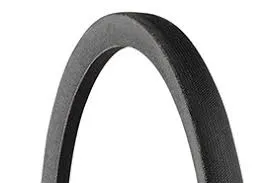- Arabic
- French
- Russian
- Spanish
- Portuguese
- Turkish
- Armenian
- English
- Albanian
- Amharic
- Azerbaijani
- Basque
- Belarusian
- Bengali
- Bosnian
- Bulgarian
- Catalan
- Cebuano
- Corsican
- Croatian
- Czech
- Danish
- Dutch
- Afrikaans
- Esperanto
- Estonian
- Finnish
- Frisian
- Galician
- Georgian
- German
- Greek
- Gujarati
- Haitian Creole
- hausa
- hawaiian
- Hebrew
- Hindi
- Miao
- Hungarian
- Icelandic
- igbo
- Indonesian
- irish
- Italian
- Japanese
- Javanese
- Kannada
- kazakh
- Khmer
- Rwandese
- Korean
- Kurdish
- Kyrgyz
- Lao
- Latin
- Latvian
- Lithuanian
- Luxembourgish
- Macedonian
- Malgashi
- Malay
- Malayalam
- Maltese
- Maori
- Marathi
- Mongolian
- Myanmar
- Nepali
- Norwegian
- Norwegian
- Occitan
- Pashto
- Persian
- Polish
- Punjabi
- Romanian
- Samoan
- Scottish Gaelic
- Serbian
- Sesotho
- Shona
- Sindhi
- Sinhala
- Slovak
- Slovenian
- Somali
- Sundanese
- Swahili
- Swedish
- Tagalog
- Tajik
- Tamil
- Tatar
- Telugu
- Thai
- Turkmen
- Ukrainian
- Urdu
- Uighur
- Uzbek
- Vietnamese
- Welsh
- Bantu
- Yiddish
- Yoruba
- Zulu
Նյմ . 05, 2024 15:21 Back to list
3d printer timing belt
Understanding 3D Printer Timing Belts A Crucial Component for Precision Printing
In the realm of 3D printing, precision is key. Every component of a 3D printer plays a significant role in determining the quality of the final product, and one of the often-overlooked yet critical elements is the timing belt. This article delves into the importance of timing belts in 3D printers, their function, maintenance, and the impact they have on printing accuracy.
What is a Timing Belt?
A timing belt is a looped strip made of flexible material, typically reinforced with fibers, that engages with pulleys to transfer power and motion. In 3D printers, timing belts are primarily used in the movement systems of the print head and the build platform. They convert rotational motion from the stepper motors into linear motion, allowing precise positioning and movement that is essential for layer-by-layer printing.
The Role of Timing Belts in 3D Printing
Timing belts are crucial for synchronizing the movement of the print head and the build platform. The accuracy with which these components move directly influences the quality of the printed object. If the timing belt is worn or improperly tensioned, it can lead to issues such as
- Layer Misalignment A slipping belt can cause the print head to misalign during a print, resulting in layers that do not stack perfectly. - Inconsistent Extrusion Variability in the movement of the print head can lead to uneven material deposition, affecting surface finish and structural integrity. - Print Artifacts Problems such as ringing or ghosting effects can occur if the timing belt does not maintain consistent motion during rapid movements.
Maintenance of Timing Belts
Proper maintenance of timing belts is essential to ensure reliable performance. Here are some tips for keeping your 3D printer’s timing belts in optimal condition
3d printer timing belt

1. Regular Inspection Periodically check for signs of wear, fraying, or damage. A worn belt should be replaced to prevent further printing issues.
2. Tension Adjustment Ensure that the timing belts are properly tensioned. Too loose can lead to slippage, while too tight can cause excessive wear on both the belt and the stepper motor.
3. Cleanliness Keep the belts clean from dust and debris. Contaminants can lead to increased friction and wear.
4. Lubrication While timing belts do not require lubrication like some mechanical components, ensuring the pulleys and bearings are properly lubricated can enhance overall performance.
Choosing the Right Timing Belt
When it comes to replacement or upgrades, selecting the right timing belt is crucial. Factors such as belt width, material composition, and tooth profile affect performance. It is essential to refer to your printer’s specifications to make an informed choice.
Conclusion
Timing belts are an integral part of the 3D printing process, impacting the machine's reliability and the quality of the print. Understanding their role, maintaining them regularly, and choosing the right belts can significantly enhance the performance of your 3D printer. As the technology continues to evolve, recognizing these nuances will lead to better, more accurate prints, fulfilling the growing demands of both hobbyists and professionals in the 3D printing landscape. Whether you are a seasoned printer or a newbie, paying attention to these minor details can lead to major improvements in your 3D printing experience.
-
Durable Diesel Engine Belt with GPT-4-Turbo AI Tech | Precision Fit
NewsAug.04,2025
-
High-Quality Tensioner Belt Pulley - Durable & Efficient
NewsAug.03,2025
-
Premium Timing Belt Factory | AI-Optimized Solutions
NewsAug.02,2025
-
Premium Custom V Belts Enhanced with GPT-4 Turbo AI
NewsAug.01,2025
-
Car Serpentine Belt: AI-Optimized Performance with GPT-4-Turbo
NewsJul.31,2025
-
Heat Joining Drive Belt | High-Durability Fusion Solution
NewsJul.31,2025

